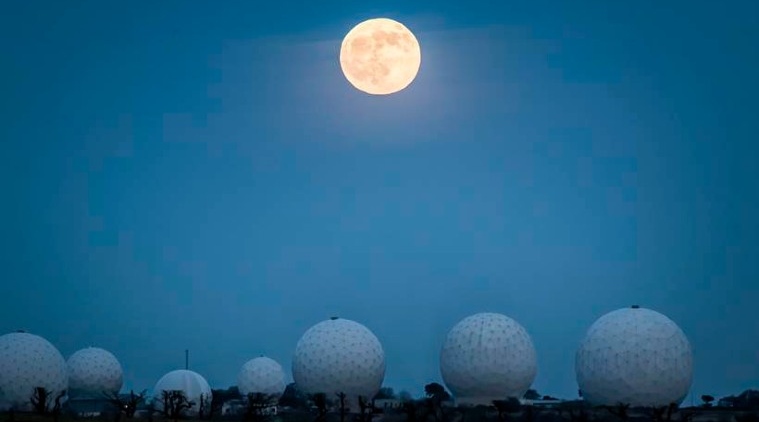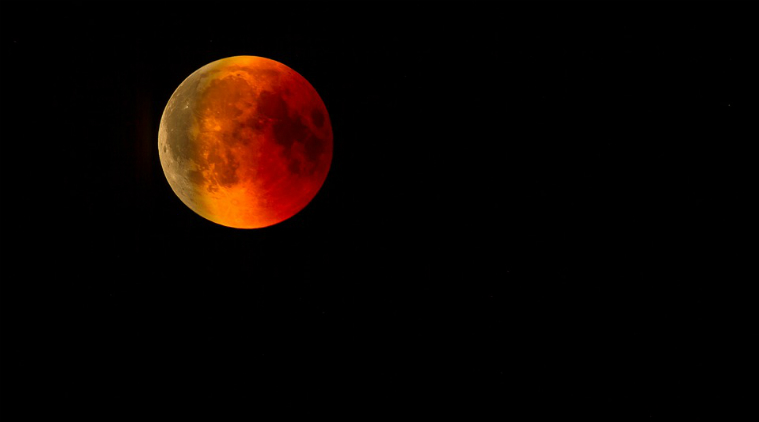 A penumbral lunar eclipse will occur next month. (Image: AP)
A penumbral lunar eclipse will occur next month. (Image: AP)
An eclipse is never alone. A solar eclipse usually occurs about two weeks before or after a lunar eclipse, thus making it a pair of the celestial event. However, at times, there are three eclipses in a single eclipse season as evident from the upcoming lunar eclipse on July 5, 2020.
The first eclipse of this season occurred on June 5, which was a penumbral lunar eclipse and the second eclipse of the season occurred on June 21, which was an annular solar eclipse. The third eclipse of the season is going to be a penumbral lunar eclipse.
What is a penumbral lunar eclipse
A penumbral lunar eclipse takes place when the Earth comes between the Moon and Sun and the Moon moves through the faint, outer part of Earth’s shadow. Since the shadow is faint, a penumbral lunar eclipse is often mistaken for a regular Full Moon.
 Blood Moon visible during the lunar eclipse. (Representational image: Pixabay)
Blood Moon visible during the lunar eclipse. (Representational image: Pixabay)
Penumbral lunar eclipse July: Date and time
The year 2020 will see a total of four lunar eclipses. The first lunar eclipse happened in January, the second one occurred in June, the third one will happen in July, and the fourth and final one will occur in November. The upcoming penumbral lunar eclipse on July 5 will be the third lunar eclipse of the year 2020.
As per timeanddate.com, the penumbral lunar eclipse will start at 8:37 am IST on July 5, 2020. It will reach maximum eclipse at 9:59 am and end at 11:22 am on the same date.
Will it be visible in India?
The upcoming lunar eclipse will not be visible in India. The regions which will witness the penumbral lunar eclipse of July 5 include much of Africa, much of North America, South/West Europe, South America, Pacific, Atlantic, Indian Ocean, and Antarctica.